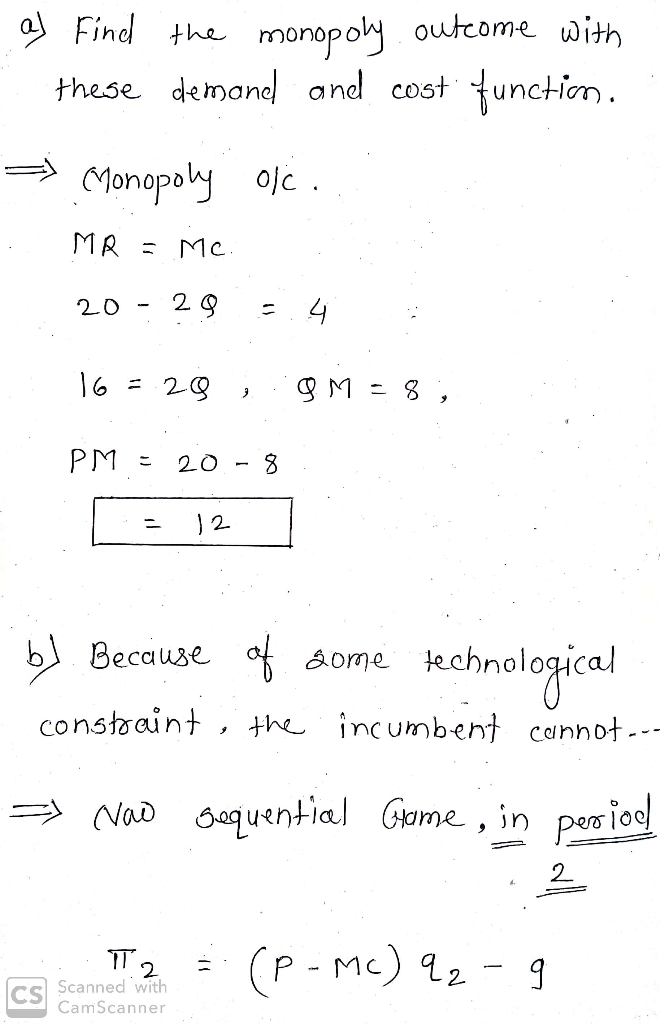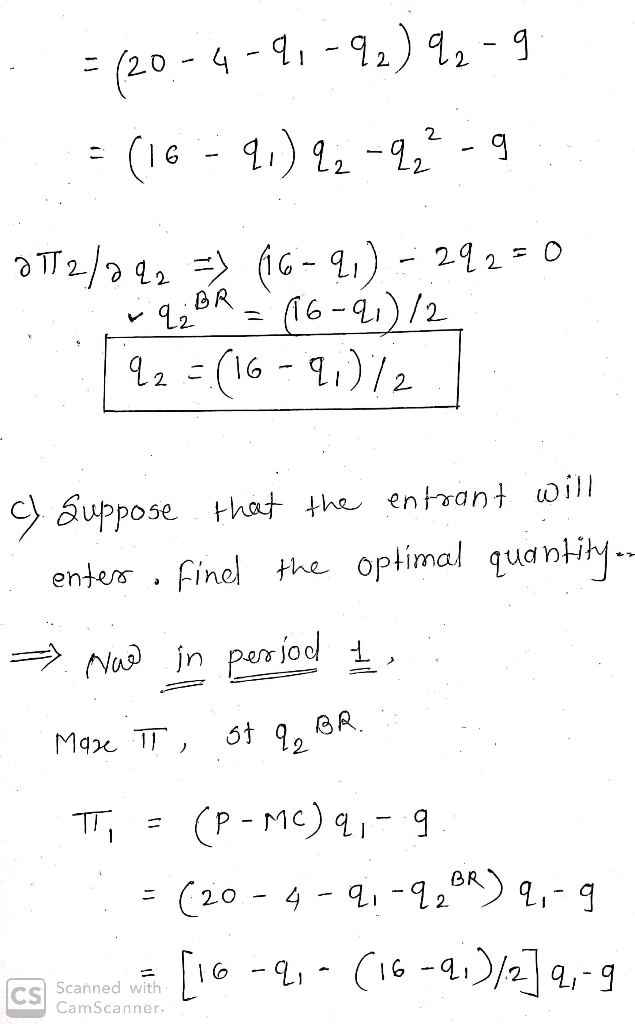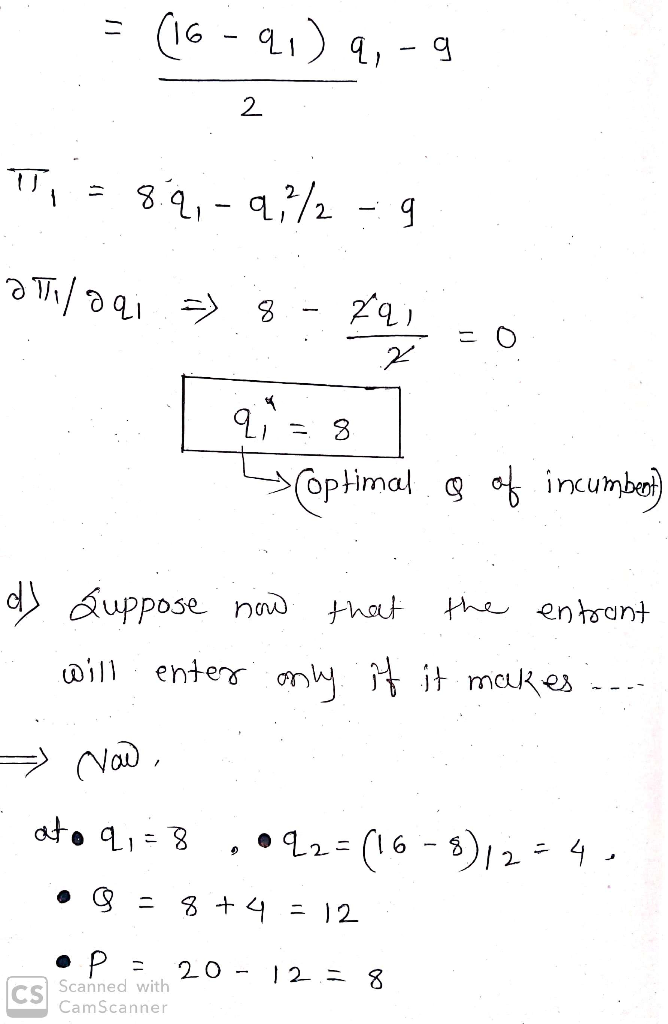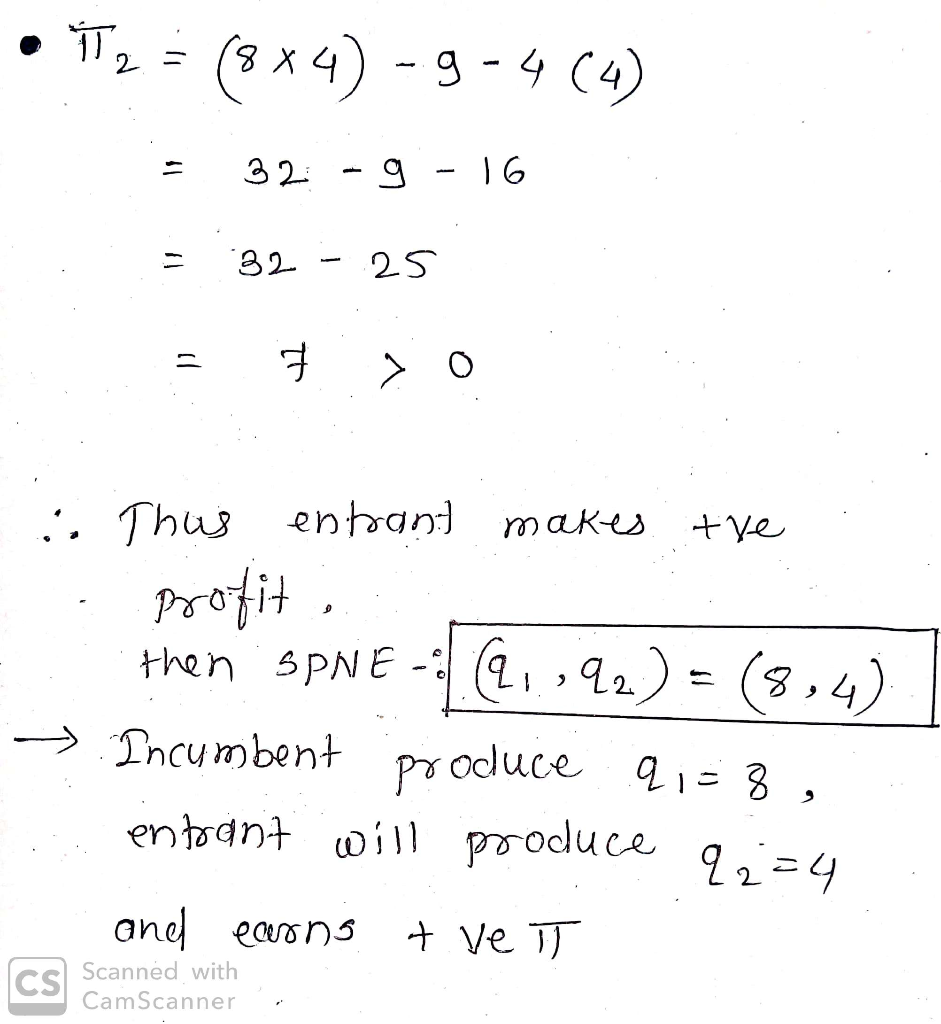Question
In: Economics
There is a market operating for two periods. In the first period, there is only an...
There is a market operating for two periods. In the first period, there is only an incumbent firm, and an entrant may enter in the second period. The demand function each period is p = 20 − Q, where Q is the total quantity in the market. The per period cost function of each firm is c(q) = 9 + 4q. There is no discounting. Firms choose quantities.
(a) Find the monopoly outcome with these demand and cost
functions.
(b) Because of some technological constraint, the incumbent cannot
choose different quantitie in the two periods: qI = qI = qI . The
entrant observes the incumbent’s quantity qI and decides if to
enter and, if yes, how much to produce. Find the optimal choice of
the entrant for any q.
(c) Suppose that the entrant will enter. Find the optimal quantity
of the incumbent.
(d) Suppose now that the entrant will enter only if it makes
positive profits. Find the subgame-perfect Nash equilibrium.
Solutions
Expert Solution
Where is the market operating for two periods. In the first period, there is only an incumbent firm, and an entrant may enter in second period. The demand function is period is P=20 - Q, where Q is the total quantity in the market. the par period cost function of each firm is c(q)=9+4q . There is no ...
= Given data :-
P = 20 - Q
c(q)= 9+4q




Related Solutions
Consider an individual that lives for two periods. She only works in the first period and...
Suppose there are only two time periods, today (period 1) and tomorrow (period 2), and only...
Vesta will live only for two periods. In period 0 she will earn $50,000. In period...
1. Suppose oil is only to be extracted over two periods (period 0 and period 1)...
Jenifer lives two periods. In the first period her income is fixed at $10,000; in the...
Jenifer lives two periods. In the first period her income is fixed at $10,000; in the...
Suppose I hold an asset for two periods. Its return is -20% inthe first period...
Marisol has income and consumes for two periods. Period 1 income is A1 and period 2...
Assume the existence of a two-period Diamond Model. Individuals may live for up to two periods...
5. Doogie lives for four periods. He has just completed the first period of his life...
- Suppose the economy is suffering from high rates of unemployment. What kind of fiscal policy should...
- A car accelerates uniformly from rest to 26.5 m/s in 8.60 s along a level stretch...
- Project 4 Prepare a chart of your major expenses and check the impact of inflation by...
- What are the trends in the national minimum wage for the UK? Please answer in an...
- You are in a boat traveling perpendicular to waves in water. The wave speed is 8.40...
- I need to develop an abstract class/ class that will be called RandString will be used...
- Two carts (100 g and 150 g) on an air track are separated by a compression...
 Rahul Sunny answered 2 months ago
Rahul Sunny answered 2 months ago